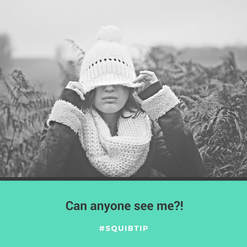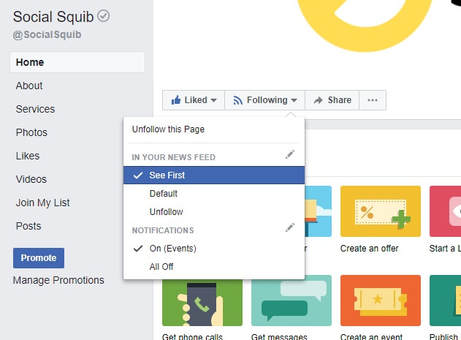|
By Anne Popolizio
Don’t get me wrong, when it comes to advertising platforms, Facebook is an extremely affordable, high-converting platform, but you’re not going to boost every post, so here are three tips to get your fans to actually see your organic content. 1. See First This is hands down the easiest way to ensure that your fans see your content. When Facebook started suppressing content from pages, they also gave us a workaround to ensure that we could always see the content that really mattered most to us. It’s called “See First.” The steps:
It’s that easy. The default following status means you’ll only see the content when Facebook feels like showing it to you, which can sometimes feel like never. When you change the following status of a page to “See First,” Facebook will always put that page’s content at the top of your feed. See First is a great tool for you to use if you want to keep an eye on competitors or make sure you always see the content from your favorite pages. I recently realized Facebook had completely filtered Humans of New York from my feed, which I found unacceptable, so I changed HONY to See First. Now I see everything they post! The trick, though, is to get your fans to mark your page as See First. If you’re running a webinar, you can easily walk people through this process. In your next email newsletter, include an invitation with instructions and a screen shot (feel free to use the one above). Share this invitation on your Facebook page. Invite your fans to change their following status, and invite them more than once. Getting your fans to see your content is crucial for engagement, and engagement is crucial for continued reach, so even if a small percentage of your fans change to See First, their increased engagement will have a ripple effect on your overall reach. 2. Posting frequency (it’s okay to post something more than once!) I’m going to let you in on a dirty little secret of professional social media managers. We post content more than once. We don’t post the exact same post three days in a row with nothing else in between, but we do post important content more than once. It turns out not everyone is glued to Facebook all day every day. So by posting content more than once, you are able to reach different people on different days at different times. You’re able to cast a wider net over your fans. If you’ve posted a new blog article, share it the day you publish it. Then share it again the next day and share it for a third time a week or so later. If you’re worried about content feeling redundant to your fans, don’t. People see articles multiple times in their feeds all the time. Sometimes it takes a few views before we finally click on it. You can also use these repeated shares as a testing opportunity. Change up the image you share with the blog post or test out different copy. See which engages your audience more. Track this information over time. You’ll learn a lot about your audience. Squib Tip: Make sure to put other content in between these repeated posts so someone who looks at your Facebook page doesn’t see an entire feed of one repeated post. If you’re only posting once per day, maybe put 2-3 days between the first and second share and use a new picture for the second post. 3. Posting time - Be informed and go outside the box You want to know when your audience is online. I see articles sometimes that suggest specific “ideal” times to post. I’ll tell you now – they’re full of crock. The ideal time to post is unique to each audience. I used to manage a page for a youth sailing school. If I posted on a Monday at 11 AM, nobody saw it. If I posted on Saturday at 11 AM, everyone saw it. I had a triathlon coaching company, however, who had terrible engagement on Saturday morning. Why? On Saturday morning all of their fans were out doing their long trainings. My sailing school moms, on the other hand, were happily scrolling their feeds because they had just dropped their kids off at sailing practice. So how do you know what time is right for YOUR audience? Under the Insights tab (at the top of your page), select “Posts.” That will bring up a graph that shows you how many of your followers are on Facebook on a given day, and the graph below it will give you a time breakdown. Click on the different days to see the time breakdown for each day. Use this graph as your guide to decide when to post. A little before or at your peak online time is a great time to post. So for this page, I’d recommend a post between 11 AM and 12 PM and another between 8 PM and 9 PM.
Now those times are not set in stone. Remember, not everyone is online at the same time, and if you only post at set times, you’re only going to hit a very specific segment of your audience. So shake it up every once in a while, and don’t be afraid to post at 2 AM. You’ll see this page has pretty solid numbers all through the night. A 1 AM post will get pretty good reach because so little content is published after people go to bed. Insomniacs love to scroll Facebook. They need love from your page too. How do you know what’s working? Experiment and track your results. This is how you get to really know your fans. The Recap:
Ready to take Facebook ads to the next level? Check out our Facebook Ads Cheat Sheet. Comments are closed.
|
Say Hi!
© COPYRIGHT SOCIAL SQUIB 2016.
ALL RIGHTS RESERVED.
ALL RIGHTS RESERVED.



 RSS Feed
RSS Feed

